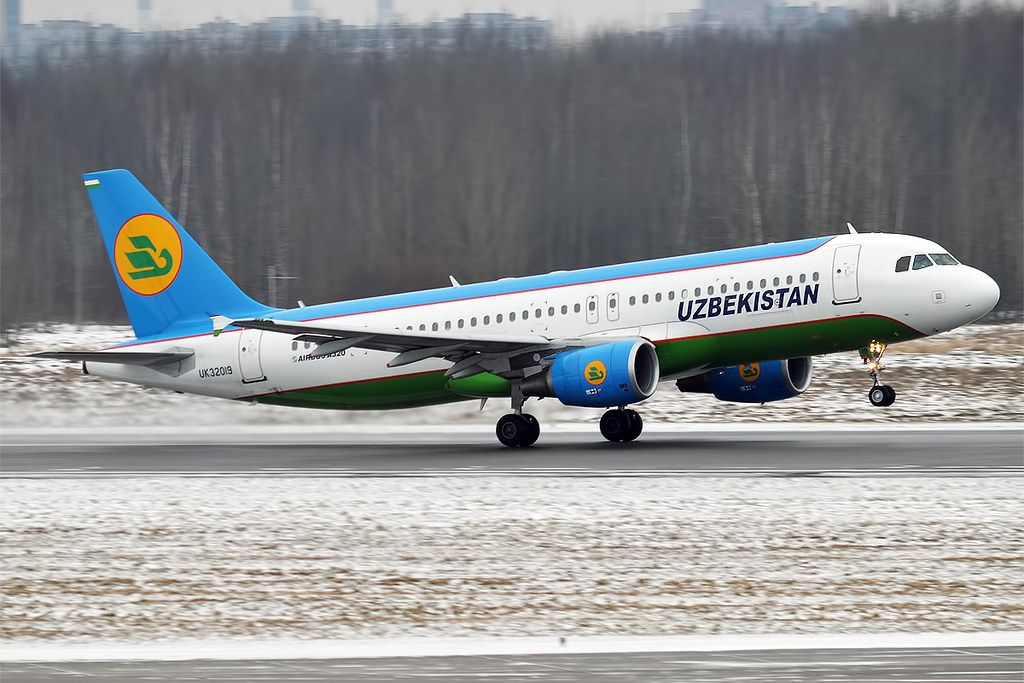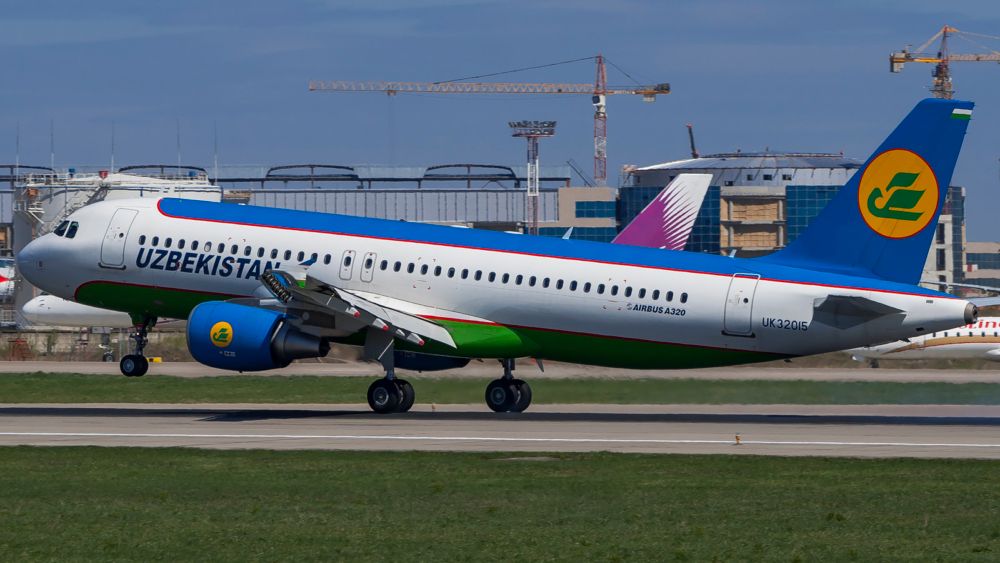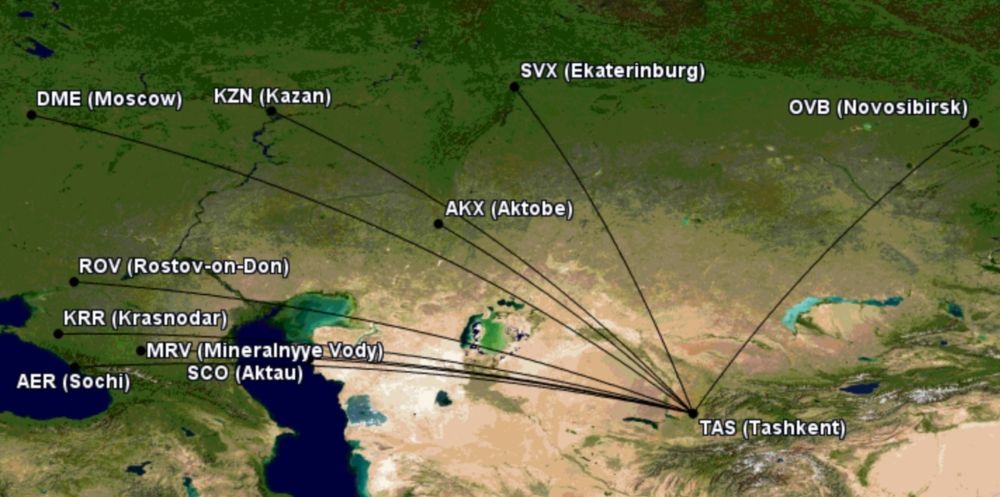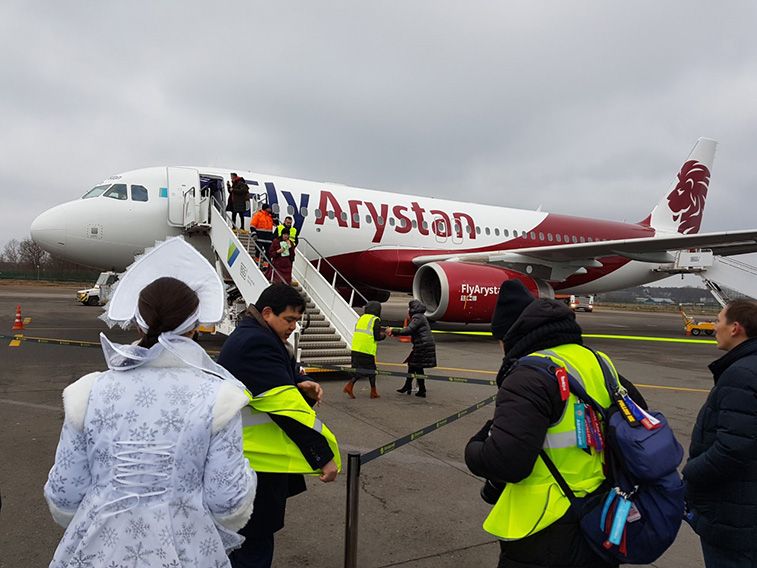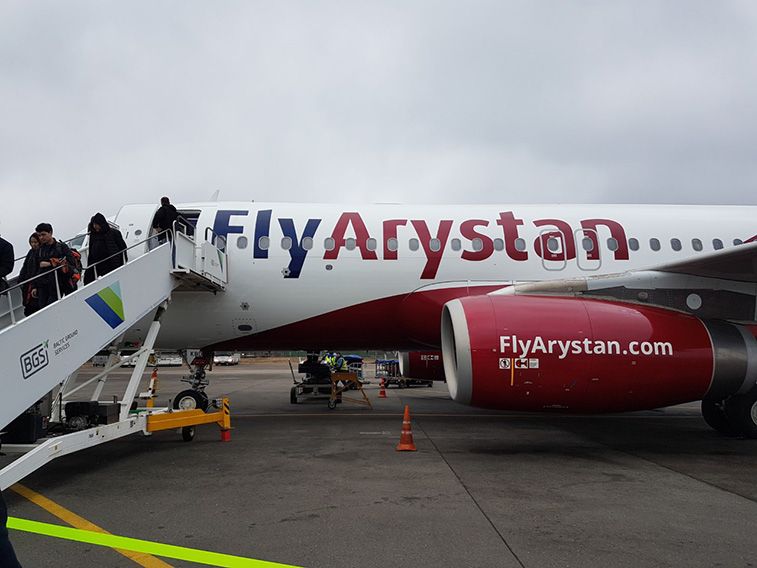Uzbekistan Airways' new lower-cost subsidiary, first mentioned a few years ago, has the creative brand of "Uzbekistan Express". With its first flight on August 30th, it'll initially use two Airbus A320s from its parent, with the aircraft to be reconfigured from a two-class, 150-seat layout to 174 in all-economy. We check out this new operator.
A low-cost subsidiary's role has often been to operate routes that didn't work, or work well enough, for their higher-cost parent. Will Uzbekistan Express be any different?
What is happening?
According to its parent's website, the Uzbekistan Express' first flight was on August 30th from Tashkent, the Uzbek capital, to Moscow Domodedovo and back. And although it is hard to confirm, it appears that it is in the air as this article is written as UZB9630 back to Tashkent, operated by UK32015, an A320 delivered to Uzbekistan Airways in 2010.
Looking ahead, Uzbekistan Express anticipates domestic routes, whether replacing its parent or not. And it anticipates more visiting friends and relatives (VFR)-driven routes to Russia, including Novosibirsk, Kazan, Rostov, Krasnodar, Sochi, Mineralnye Vody, and Ekaterinburg, along with Kazakstan. In 2019, over 1.3 million flew between Uzbekistan and Russia, booking data shows.
A big compromise
Uzbekistan Airways says Express is a "budget" airline but also a hybrid one. This means the dreaded C word: compromise. The carrier is likely to have a certain amount of freedom, but it won't be a 'proper' low-cost carrier (LCC) as it is likely to not have various fundamental things that underpin them. And it is unlikely to have a separate management team, a different air operator's certificate (meaning it'll simply be a marketing operation rather than a 'real' airline), and so on, and it'll probably remain very small.
Stay aware: Sign up for my weekly new routes newsletter.
Uzbekistan Express has said that it will seek to stimulate demand by lowering fares by around 20%. That's good – although most LCCs normally aim for 30-40% – but it'll obviously need meaningfully low costs to help make it work well beyond simply increasing the number of seats, although higher seating density is an important way to reduce seat-mile costs.
Will it be willing or given the freedom to have meaningfully lower labor costs and higher labor productivity? Much greater aircraft productivity? Much lower ticket distribution costs? A real focus on unbundling? And many more things. This remains unclear.
Central Asia's third budget airline
Uzbekistan Express is Central Asia's third 'budget' airline after Kyrgyzstan's Air Manas and Kazakistan's FlyArystan, which took to the skies in May 2019. And it'll also be the region's second low-cost subsidiary, with FlyArystan – meaning FlyLion – fully owned by Air Astana.
Low fares and high loads
In late 2019, just a few months after beginning, FlyArystan had a 94% seat load factor, similar to Ryanair and Wizz Air. This was on the back of very low fares from being so new, with such low fares designed to do one thing: to enormously stimulate demand, especially from people new to air travel.
And 40% lower costs
FlyArystan's lower fares were offset by the carrier reporting a 40% lower cost than its parent, a significant gap. As with most LCCs/ULCCs, aircraft productivity was key to reducing costs, with eight sectors a day expected, helped greatly by short one-to-two-hour domestic sectors. This is why this length is considered to be the 'sweet spot' for LCCs. It underpins the economics of the model.
More sectors a day not only reduces seat-mile and actual seat costs but also enables more revenue-generating opportunities from more passengers transported (potentially 1,200+ daily) and, therefore, more ancillary revenue. To what degree will Uzbekistan Express do (or be permitted to do) any of these things?
What are your thoughts on the startup? Let us know in the comments.

